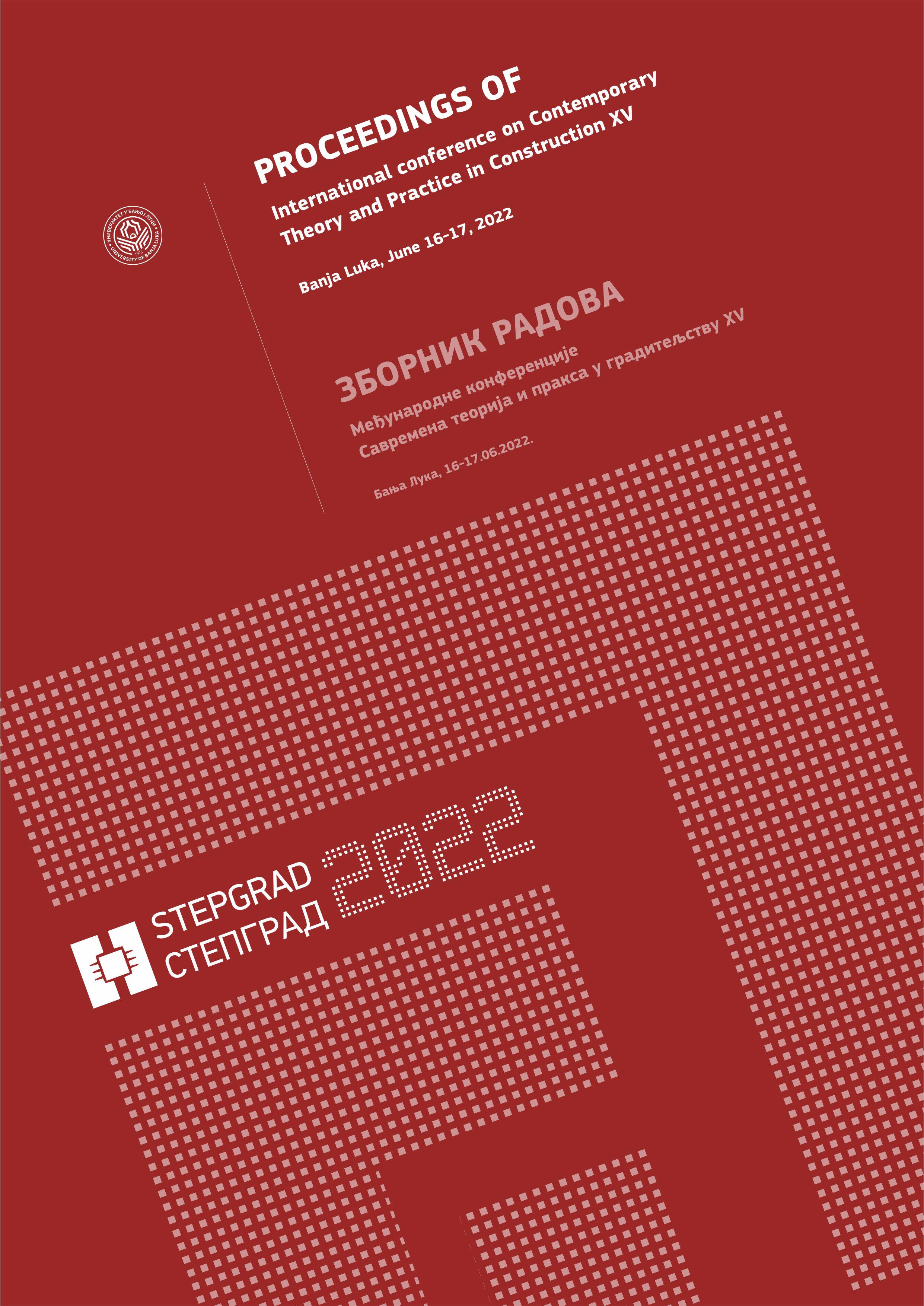THE HEAT BALANCE FOR EXTERNAL COMPOSITE WALLS
DOI:
https://doi.org/10.7251/STP2215559VAbstract
One of the first steps in reducing energy consumption for heating and cooling buildings is developing of thermal insulation envelope of building. Nowadays contemporary walls have constructions composed from different layers – which make composite structures. We have developed model of the heat balance and based on that model simulation that could analyze and determine the heat balance and temperature distribution inside the buildings in dependence from external conditions and temperature distribution inside the walls and on their boundaries between different layers. All cases represents passive isolation, where the heat balance depend only on materials characteristics, on their heat transfer coefficients, thermal conductance properties and thickness of used materials. For various combinations of today available construction and insulating materials, we have calculated the overall coefficients of heat transmission. Our calculations confirm advantage of usage hollow bricks instead solid bricks, and placing insulation layers on the outer side of walls. Furthermore, those simulations will serve as test for the wider project of the dynamic heat flow experiments in general structures and among them in nanostructures as well.
References
M. Muravljov, Construction materials, ISBN: 978-86-395-0512-7, Građevinska knjiga, Belgrade, 2007, pp. 33-40, 135-137, 242-245. – In Serbian
J.P. Šetrajčić and S.M. Vučenović, “Energy resources – potentials and perspectives”, in Proc. Retrospective of Scientific Thought and Vision of AGF Development in Banja Luka, Vol. 1, 2006, pp. 52-58.
J.P. Šetrajčić and D.Lj. Mirjanić, Biophysical foundations of technology and medicine, ISBN: 987-99938-21-36-6, Academy of Sciences and Arts of the Republic of Srpska, Banja Luka, 2012, pp. 127-128, 132-133. – In Serbian
B.M. Živanović, Materials in construction, Faculty of Technical Sciences, Novi Sad, 1981, pp. 2-65. – In Serbian
W.S. Janna, Engineering heat transfer, 2nd Ed., ISBN: 0-8493-2126-3, CRC Press, New York, 2000, pp. 1-24, 35-98.
“Conductive Heat Transfer”, Internet: https://www.engineeringtoolbox.com/conductive-heat-transfer-d_428.html
“Steady Heat Conduction“, Internet: http://cecs.wright.edu/~sthomas/htchapter03.pdf
“Heat Conduction through Walls – Thermal Engineering”, Internet: https://www.engineeringenotes.com/thermal-engineering/heat-conduction/heat-conduction-through-walls-thermal-engineering/30104
“Conduction Heat Transfer”, Internet: https://www.sciencedirect.com/topics/engineering/conduction-heat-transfer
Wei Chen, A Study of Heat Transfer in a Composite Wall Collector System with Porous Absorber, Proceedings of the Sixth International Conference for Enhanced Building Operations, (Shenzhen, China, November 6 - 9, 2006), Vol.VIII-3-1.
K. Fodor, Conducting heat through the wall, Diploma work, Faculty of Sciences, Novi Sad, 2011, pp. 5-21. – In Serbian
N. Nenadov, Energy efficiency project for a residential building in Novi Karlovci, Diploma work, Faculty of Technical Sciences, Novi Sad, 2014, pp. 5-19. – In Serbian
N. Šetrajčić, S.K. Jaćimovski, J.P. Šetrajčić: Heat exchange through composite walls, Zaštita Materijala 58/2, 163-170 (2017).
“Portal of the construction industry of Serbia”, Internet: www.gradjevinarstvo.rs/
“Rulebook on energy efficiency of buildings”, Službeni glasnik RS, No. 61, 2011. – In Serbian

